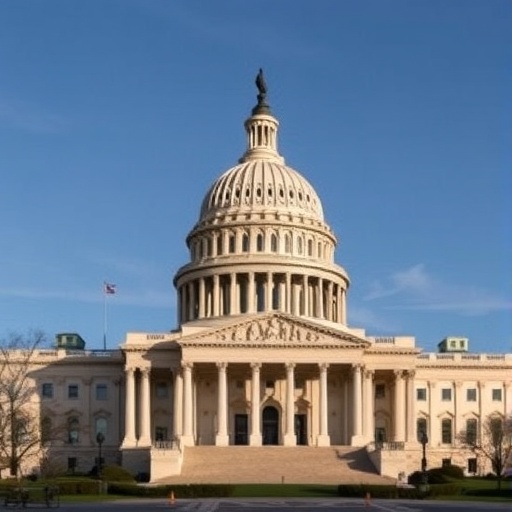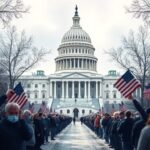Senate Faces Mounting Pressure to End 21-Day Government Shutdown with Bipartisan Compromise Urged
As the U.S. government shutdown stretches into its 21st day, Senate leaders from both parties are under unprecedented pressure to forge a compromise that could finally restore full government operations. Furloughed federal workers, shuttered national parks, and delayed critical services have fueled a growing chorus of frustration across the nation, turning what began as a partisan standoff into a national crisis demanding immediate resolution in the heart of Washington politics.
The impasse, rooted in disagreements over border security funding, has left over 800,000 federal employees without paychecks, affecting everything from air traffic control to food safety inspections. With public approval ratings for Congress plummeting to historic lows, the Senate—often the slower chamber of deliberation—is now the focal point of intense lobbying from business leaders, labor unions, and everyday Americans weary of the shutdown‘s ripple effects.
Federal Workers Bear the Brunt of Prolonged Shutdown Chaos
In cities from Washington D.C. to remote national forests, the human toll of the shutdown is becoming painfully clear. Take Sarah Jenkins, a Smithsonian curator in the nation’s capital, who has been furloughed for three weeks without pay. “We’re not just closing exhibits; we’re losing irreplaceable time and resources that keep our cultural heritage alive,” Jenkins told reporters outside the closed National Museum of Natural History. Her story echoes thousands more, as the Office of Personnel Management reports that approximately 2.6 million federal workers are either on unpaid leave or working without compensation.
Beyond the Beltway, the impacts are equally stark. In Yellowstone National Park, rangers like Mike Rodriguez have watched visitors dwindle to a trickle, with entrance gates padlocked and essential maintenance halted. “This isn’t just about lost wages; it’s about the safety of our parks and the jobs of seasonal workers who depend on this income,” Rodriguez explained in a recent interview with local media. Statistics from the U.S. Travel Association paint a grim picture: the shutdown has already cost the travel industry $3 billion in the first two weeks alone, with projections soaring past $5 billion if it extends further.
Essential services, too, are strained. The IRS has postponed tax refund processing, delaying billions in returns to taxpayers, while the Department of Housing and Urban Development has frozen aid to low-income families. According to a Brookings Institution analysis, low-income households are hit hardest, with food assistance programs like SNAP facing administrative backlogs that could leave millions at risk of hunger. These real-world consequences are amplifying calls within the Senate for swift action, as constituents flood congressional offices with pleas for relief.
Bipartisan Negotiations Heat Up in Senate Cloakrooms
Behind closed doors in the Senate, politics is shifting from gridlock to guarded optimism as leaders push for a compromise. Senate Majority Leader Mitch McConnell (R-KY) and Minority Leader Chuck Schumer (D-NY) have held marathon sessions, brokering talks that include moderate senators from both sides. A key flashpoint remains the $5.7 billion requested for border wall construction, but emerging proposals suggest a blend of enhanced border technology funding and humanitarian aid as potential bridges.
“We can’t let this shutdown define our legacy; it’s time for adults in the room to step up,” Schumer declared during a floor speech on Thursday, urging his Republican colleagues to prioritize government operations over ideological purity. On the Republican side, Sen. Lindsey Graham (R-SC) echoed the sentiment, stating, “Prolonging this pain serves no one—let’s find common ground on security without shutting down the engine of our economy.” These statements mark a rare moment of alignment in a chamber often paralyzed by partisanship.
Supporting these efforts, a group of 10 centrist senators, including Sens. Susan Collins (R-ME) and Joe Manchin (D-WV), has formed an informal working group to draft a bipartisan bill. Their proposal, leaked to Politico, includes temporary funding for government operations through March, coupled with a commission to study long-term immigration reform. While not a panacea, insiders say it could garner the 60 votes needed to overcome a filibuster, signaling a potential breakthrough in the Senate‘s deliberative process.
External pressures are also mounting. The U.S. Chamber of Commerce has launched a multimillion-dollar ad campaign targeting senators in swing states, highlighting how the shutdown is stifling small businesses. “Every day this continues, jobs are lost and opportunities vanish,” Chamber President Thomas Donohue wrote in an open letter to McConnell and Schumer. Labor leaders, including AFL-CIO President Richard Trumka, have rallied outside the Capitol, demanding an end to what they call “needless suffering inflicted by Washington politics.”
Economic Fallout Escalates as Shutdown Drains National Resources
The financial hemorrhage from the shutdown is no longer abstract—it’s a tangible drag on the U.S. economy. The Congressional Budget Office estimates that each week of closure costs the nation $1.5 billion in lost productivity, with the 21-day mark pushing cumulative losses toward $11 billion. This figure doesn’t even account for indirect hits, such as the 40% drop in bookings at federally dependent airports or the stalled $1.2 billion in Small Business Administration loans.
Wall Street is feeling the pinch too. The Dow Jones Industrial Average dipped 2% in the past week amid fears of prolonged uncertainty, while bond yields have ticked up as investors seek safer havens. Economists at Moody’s Analytics warn that if the shutdown persists into February, it could shave 0.5 percentage points off first-quarter GDP growth—a setback in an otherwise robust economy. “This isn’t just a Washington problem; it’s a national economic emergency,” said Mark Zandi, chief economist at Moody’s, in a CNBC interview.
Regionally, the disparities are stark. In agricultural heartlands like Iowa, USDA inspectors are absent, leading to unprocessed meat exports and potential spoilage losses exceeding $500 million. Coastal states reliant on NOAA weather services face heightened risks during storm season, with delayed forecasts contributing to at least two reported shipping incidents off the Gulf Coast. A Federal Reserve survey of businesses revealed that 25% have already postponed hiring or investments due to the shutdown, underscoring how politics is infiltrating boardrooms nationwide.
Longer-term, the shutdown threatens fiscal stability. With the debt ceiling looming in early 2019, analysts fear a double whammy that could trigger a credit rating downgrade. S&P Global Ratings has placed the U.S. on watch, citing governance dysfunction as a key risk factor. These economic sirens are blaring loudest in the Senate, where budget hawks and moderates alike are pressing for a compromise to safeguard government operations and investor confidence.
Key Players Outline Paths to Shutdown Resolution
From the White House to Capitol Hill, influential voices are converging on the need for a compromise to end the shutdown. President Donald Trump, who initially tied the standoff to his border wall demands, has softened his rhetoric, tweeting last week, “Great progress being made—time to get our government operations back online for the American people.” This pivot follows private briefings from economic advisors warning of recessionary risks.
In the Senate, Vice President Mike Pence has been a frequent visitor to negotiation rooms, reportedly urging Republicans to accept a short-term funding bill with concessions on immigration. “Unity is our strength,” Pence said during a Fox News appearance, emphasizing the administration’s willingness to explore alternative security measures like drone surveillance along the border.
Democrats, led by House Speaker Nancy Pelosi, are holding firm on rejecting wall funding but have signaled openness to comprehensive reform. Pelosi’s office released a statement Friday: “The Senate must lead by example—pass a clean bill to reopen the government, then tackle border security in a bipartisan way.” This stance aligns with polling from Quinnipiac University, which shows 54% of Americans blaming congressional Republicans for the shutdown, up from 48% a week prior.
Outside traditional politics, unconventional allies are emerging. Tech giants like Amazon and Google have joined forces with the #EndTheShutdown campaign, pledging $10 million in support for affected federal workers. Meanwhile, faith leaders from the U.S. Conference of Catholic Bishops have penned a letter to senators, decrying the shutdown‘s moral implications on vulnerable populations. These diverse pressures are weaving a tapestry of urgency, compelling the Senate toward a viable compromise.
Historical precedents offer both caution and hope. The 1995-1996 shutdowns, lasting 21 days in total, ended with a Republican concession on spending cuts, but not without electoral backlash. Today’s scenario, experts note, is amplified by social media’s rapid amplification of discontent, making prolonged inaction politically toxic.
Outlook for Breakthrough: Senate’s Next Critical Moves
As the shutdown clock ticks past three weeks, the Senate stands at a crossroads with several paths forward. A vote on the bipartisan funding proposal could come as early as Monday, potentially ending the stalemate and resuming government operations within 48 hours. If successful, it would include back pay for furloughed employees and a framework for ongoing immigration talks, averting further economic damage.
However, risks remain. Hardliners on both sides could derail progress, extending the shutdown into February and compounding the $11 billion tab. Senate Parliamentarian Elizabeth MacDonough has advised on procedural hurdles, suggesting a discharge petition as a backstop to force a floor vote. With 20 senators already co-sponsoring such a measure, momentum is building.
Looking ahead, resolving the shutdown could catalyze broader politics on infrastructure and healthcare, areas where compromise has eluded Congress for years. Economists predict a quick rebound if operations resume, but lingering uncertainty might dampen consumer spending through the spring. For the American public, the real win would be a Senate that prioritizes functionality over factionalism, setting a precedent for future crises. As one Capitol Hill aide put it anonymously, “This shutdown has been a wake-up call—now it’s time to answer it with action.”
In the coming days, all eyes will be on the Senate floor, where the fate of government operations hangs in the balance of political will and pragmatic compromise.









